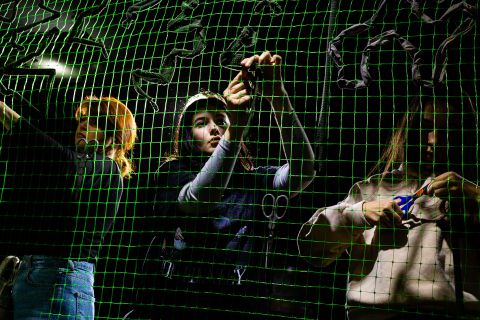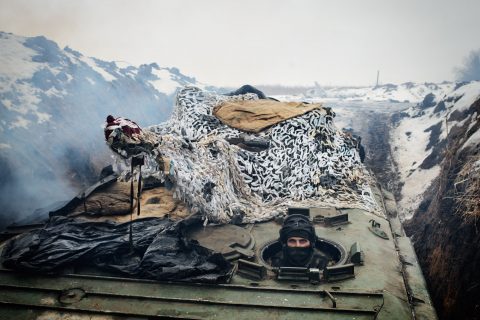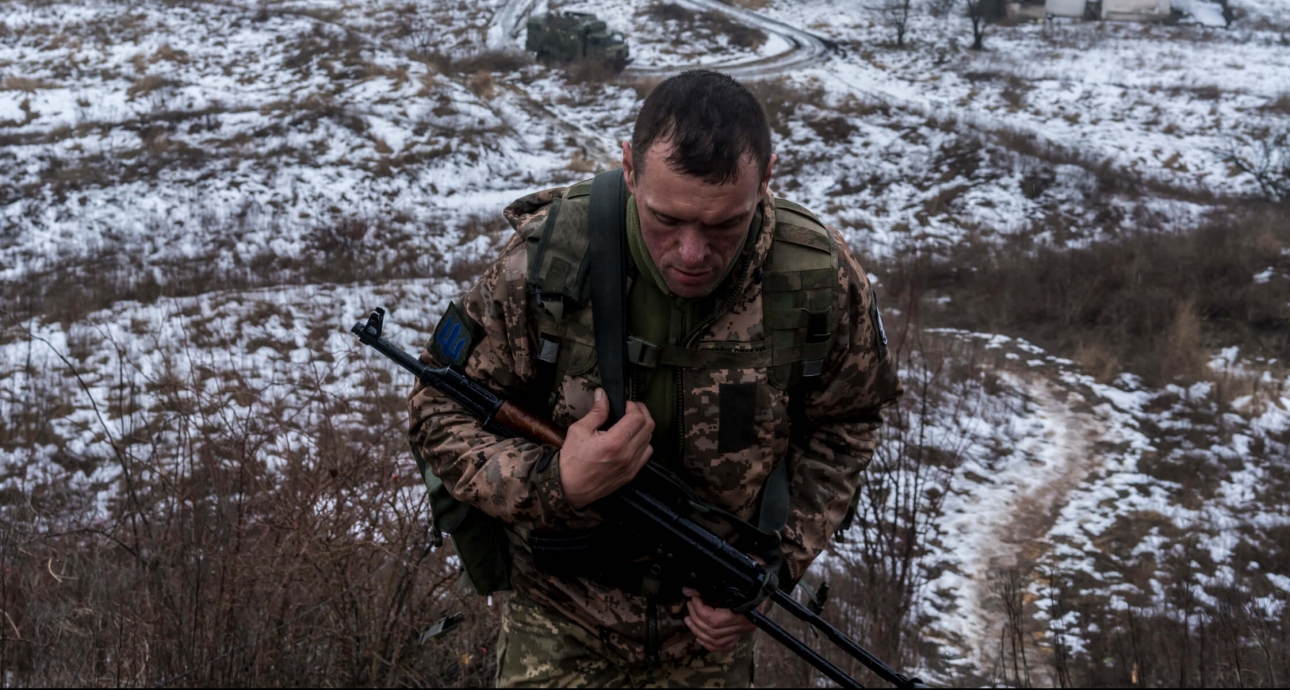
Brendan Hoffman: “Competition among Photographers Often Turns into a Game — Who’s Going to Come the Closest to the Crying Widow”
How do you identify yourself today?
I still consider myself a news and documentary photographer, but sometimes I think of myself as an artist, who uses journalistic methods in his practice. I use the same journalistic techniques in everything I do, whether it is a personal project or an assignment.
You’ve spent eight years in Ukraine. Where were you before that and why did you come here?
I lived in Moscow for little less than a year, before moving to Kyiv. My involvement with Eastern Europe, with post-Soviet spaces in particular, dates back to 2005. As soon as I had an idea of becoming a photographer, I went to Azerbaijan, then Georgia, Armenia, Nagornyi Karabakh.
All of these regions have one thing in common — they are conflict zones on a post-Soviet territory.
It’s not that I chose them on purpose. I went to Moscow a few months before the Maydan Revolution, and I couldn’t even think that something like that was going to happen. At that time, I still noticed Cold War stereotypes and oversimplified images surrounding that part of the world. So, I tried to visit places, where I could uncover more nuances.

An unemployed miner looks through a field of sunflowers for debris and human remains after the crash of Malaysia Airlines flight MH17. Hrabovo, July 18, 2014.
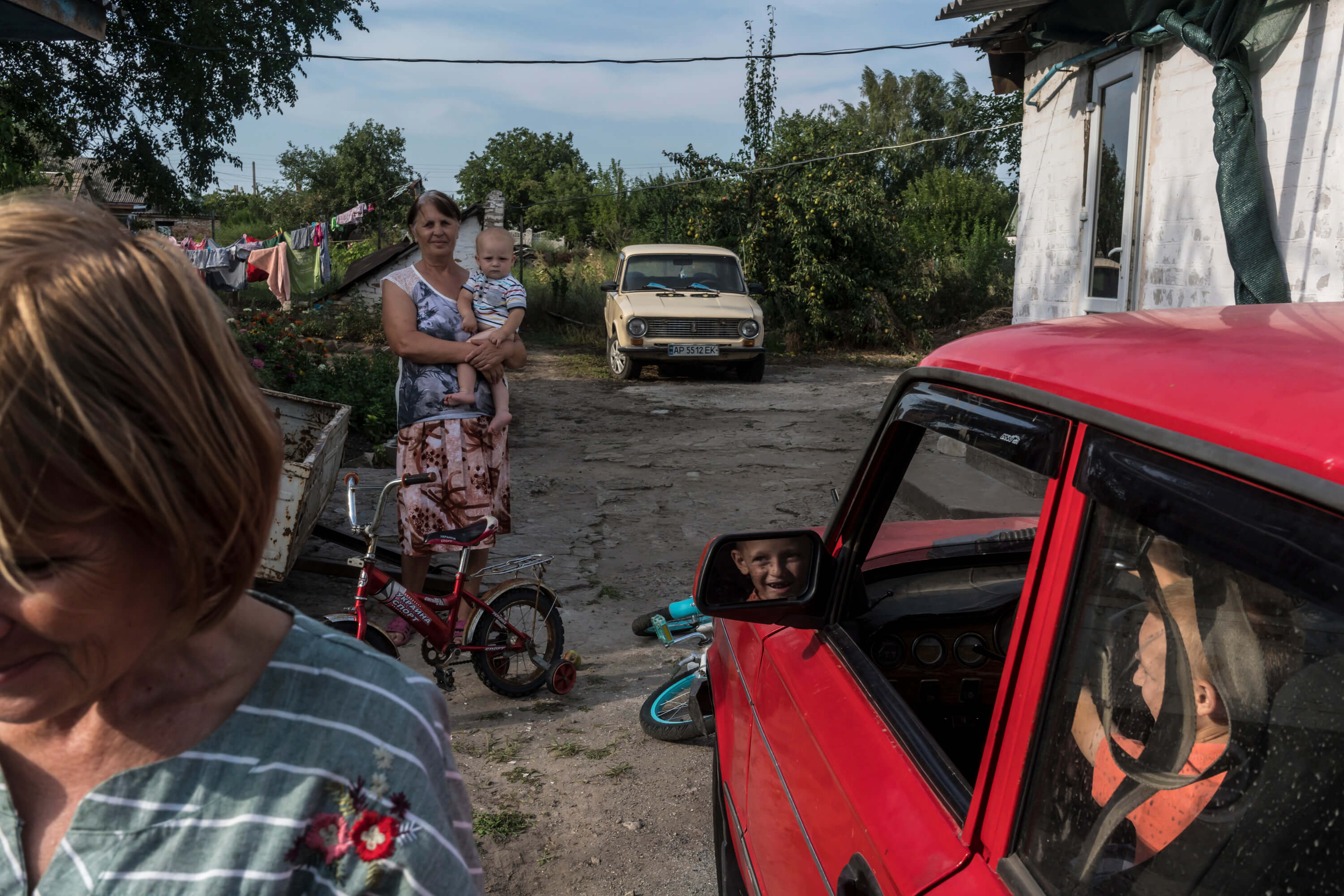
Natalia visits her neighbors who have five children. They managed to flee occupied territory, paying the driver $100. Now they live in a rented house. Sokolivka. August 2022.
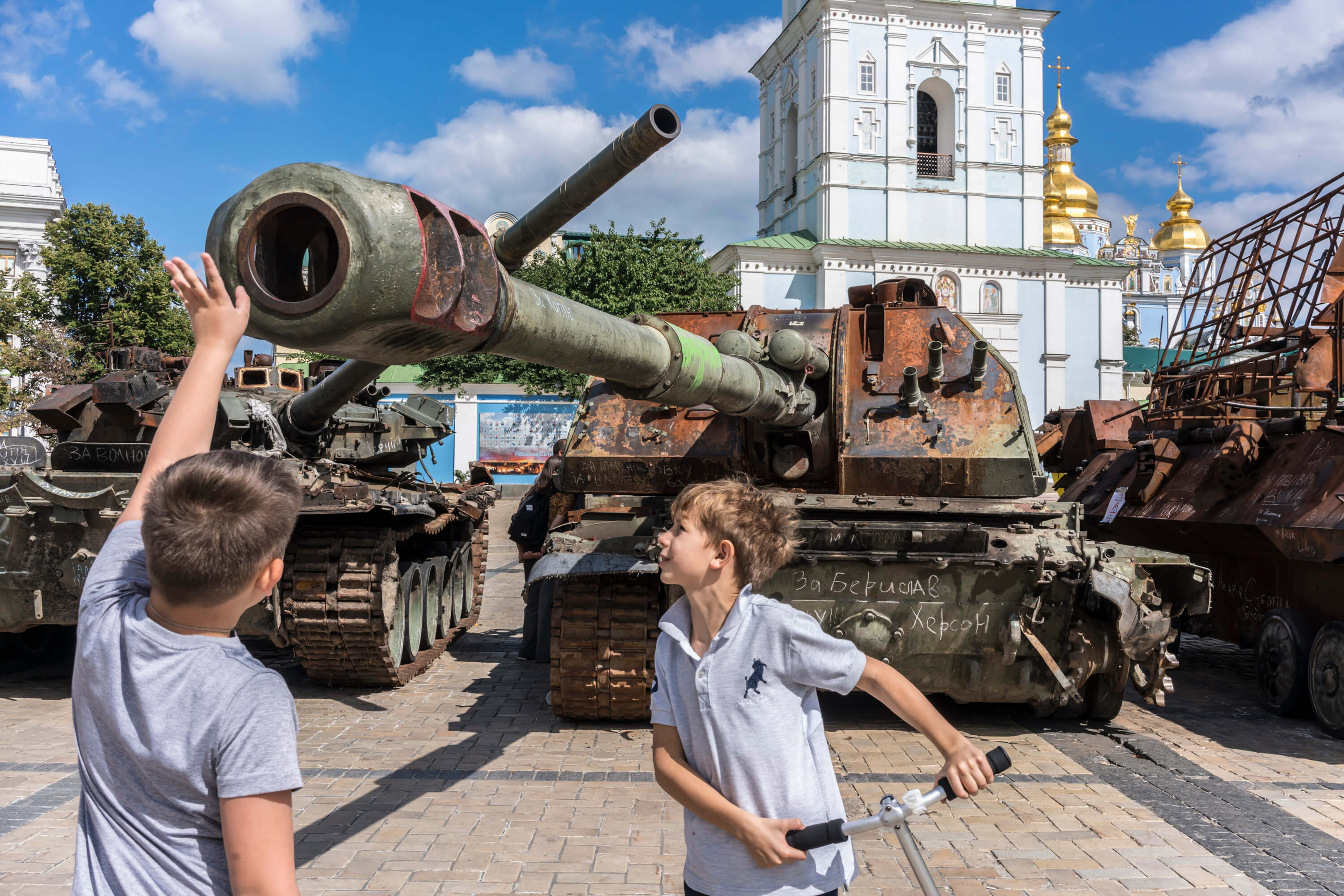
Children look at the destroyed Russian military equipment on display on Mykhailivska Square near the Saint Michael’s Monastery in Kyiv. August 31, 2022.

District morgue workers rest after exhuming the body of an unidentified man from a shallow grave in the forest where Russian soldiers were stationed in the first month of the invasion. A 40-year-old man with his hands tied was found in the Bucha district five months after the departure of the Russians, he had wounds on his body. Zdvizhivka, September 1, 2022
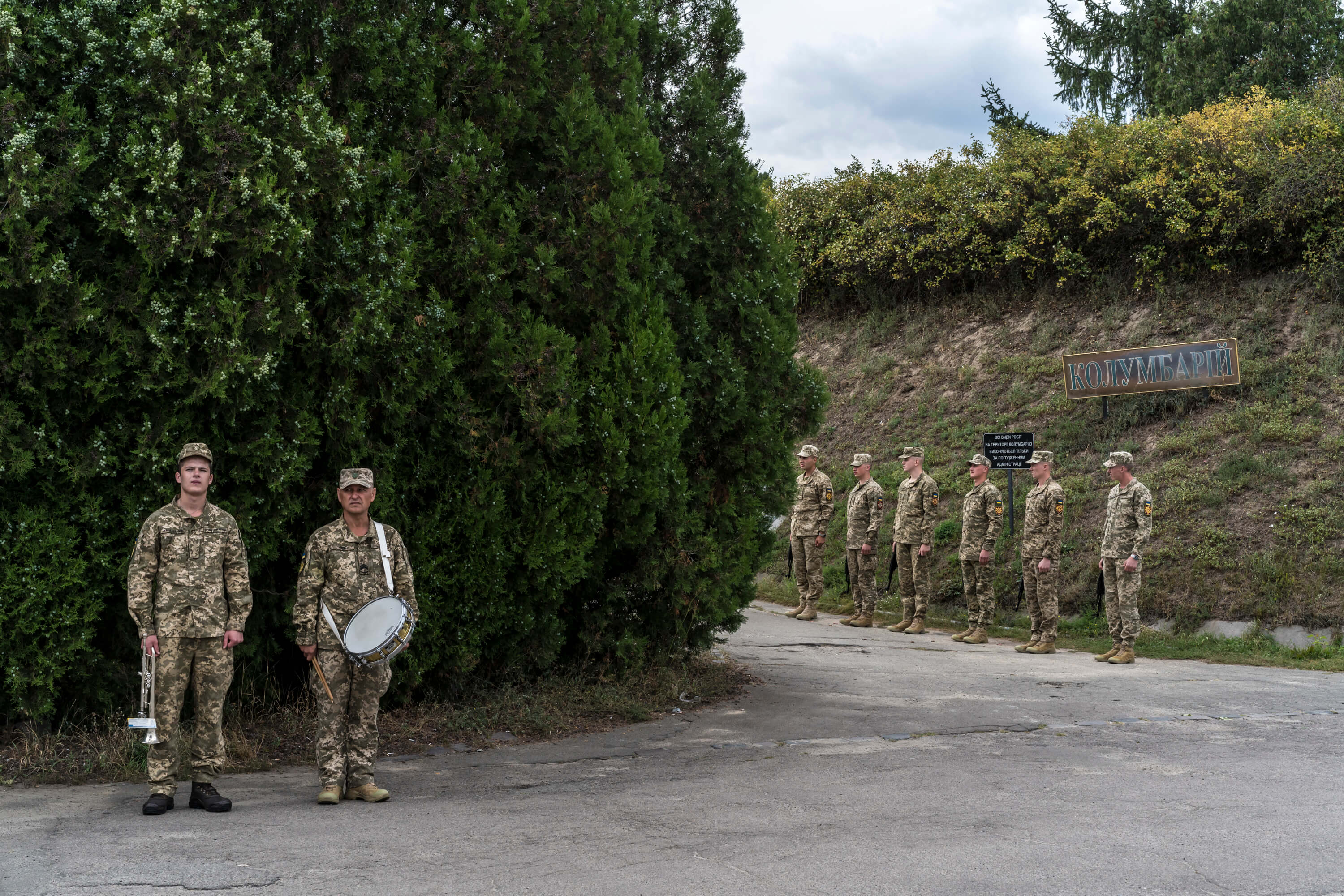
The funeral of Tengri, a sniper and intelligence officer of the Ukrainian special forces, is being held at Baikovo Cemetery in Kyiv. September 3, 2022
When the full-scale invasion started, hundreds of reporters from all over the world came to Ukraine. How did you react to that?
The main thing was to show what was happening here and make sure that this information gets attention. And I think that was successful. To a certain extent, there is so much happening in so many parts of the country that there is plenty of space for everyone to work. The problem is that the majority of people tend to clump up and do the same thing. One person writes a story, and everyone else goes like: “Oh, I need to write about it too”. And they all go to Bucha. And those were, obviously major, important stories. It’s impossible for me to say that they got too much attention. But there are probably hundreds of other villages in the same vicinity that nobody ever bothered to go to, because they’ve never heard of them or because visiting them didn’t have the same resonance as saying “I’m in Bucha”. I would love to see more people breaking out of their bubbles and doing something different. We’ve got enough stories to cover.
I would love to see more people breaking out of their bubbles and doing something different.
But usually editors in media ask about the same thing and send photographers to the same places. What do you think photographers can do to change that?
The New York Times has never told me what they wanted me to do on any given day. They were interested in general things, but they also entrusted me with the responsibility to make my own decisions. That is fairly unique amongst media. But there are reporters who write specific stories and I have to find a way to illustrate them. And sometimes you end up at a funeral alongside 35 other photographers.
Ultimately, the right decision would be to choose quality over quantity. I wish we could slow down. But I don’t know how a freelance photographer, who is a part of this huge system, can possibly put the brakes on all that.
Only a few Ukrainian photographers work for international media. The majority of outlets just send their own reporters, paying them at a double rate, obviously. But it’s Ukrainian photographers who need support the most, who need jobs. Why do you think it happens?
I know Ukrainian photographers who work for international media, but you are right, there are not so many of them. I’ve been in a situation a few times when I couldn’t work on an assignment and tried to re-assign it to Ukrainian photographers, but a lot of them were too busy working for local media or NGOs. There are many talented photographers in Ukraine, but still not enough considering the current demand.
This is an area, where media should put in some effort to nurture new talented photographers. Given that the situation in Ukraine will take a few more years to stabilize, it’s a good chance to nurture talent here, in Ukraine. But I don’t see much effort in that regard. Too many media have too few resources, too tight budgets and not enough editors. And those editors are overworked and have no time to mentor Ukrainian photographers. With that in mind, the only way for them to do their job is to find someone they know, someone they’ve worked with before, and say: “You go, I can trust you”.
I guess this is the reason. I don’t like the idea that Ukrainians are to close to the story and therefore can’t be objective. I have incredible amount of respect for those Ukrainian photographers, who keep working in a situation, which I myself find extraordinarily difficult.

Cemetery in Bucha, 2022.
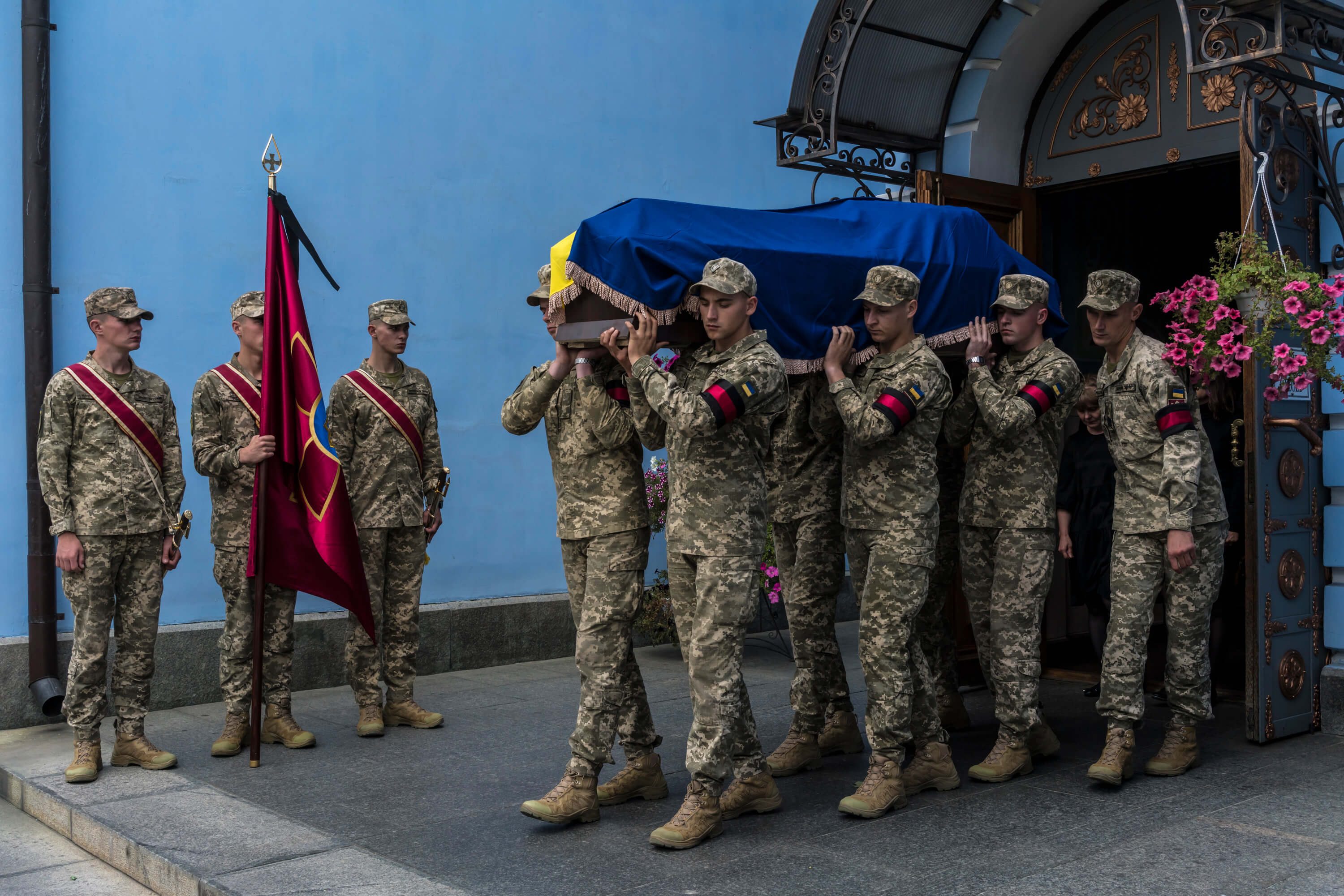
A coffin with the body of a Ukrainian special forces sniper and scout Tengri is being taken out of the Saint Michael's Monastery. Kyiv. September 3, 2022
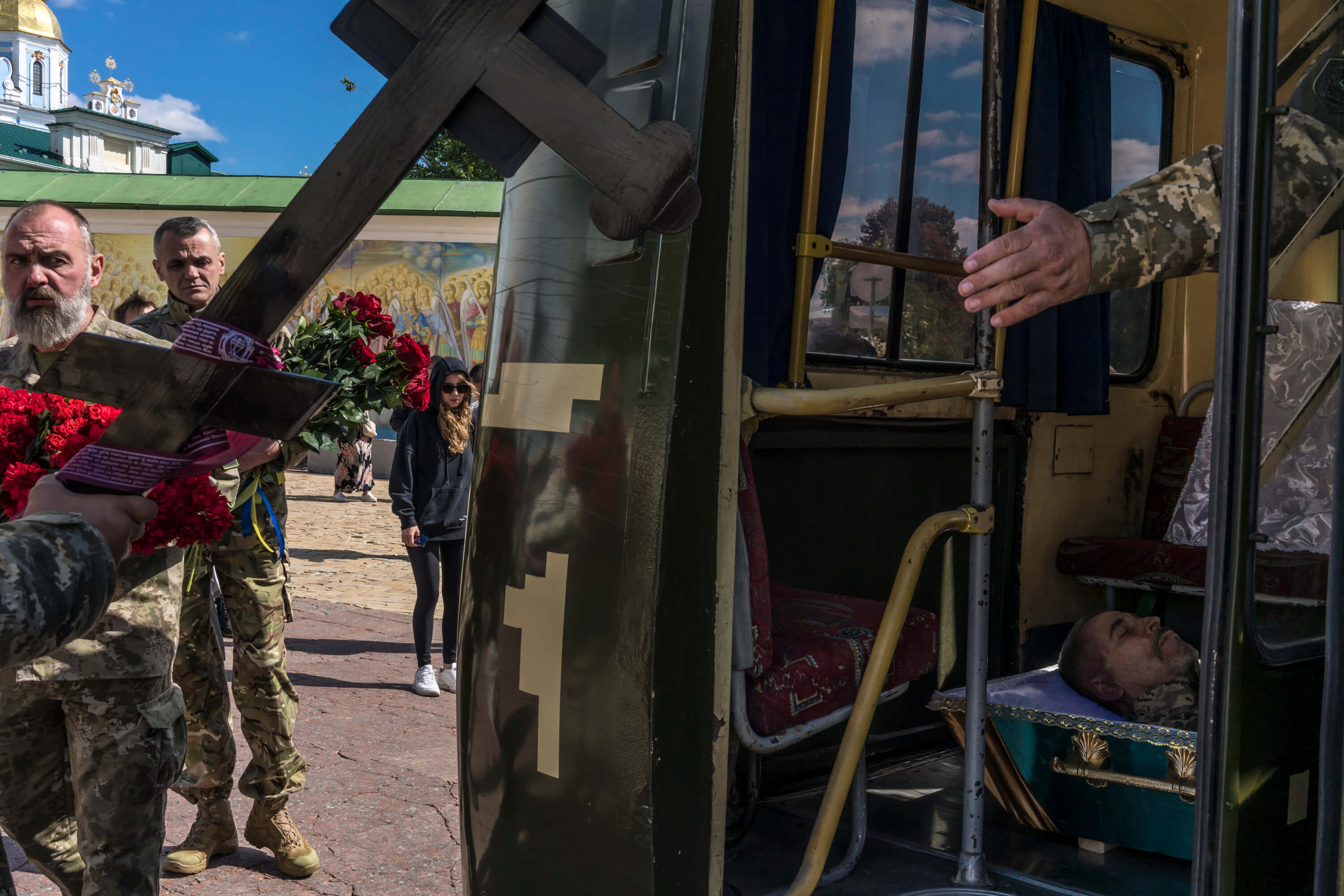
Soldiers attend the funeral of their army brother, Vyacheslav Nalyvayko. Kyiv. September 2022.
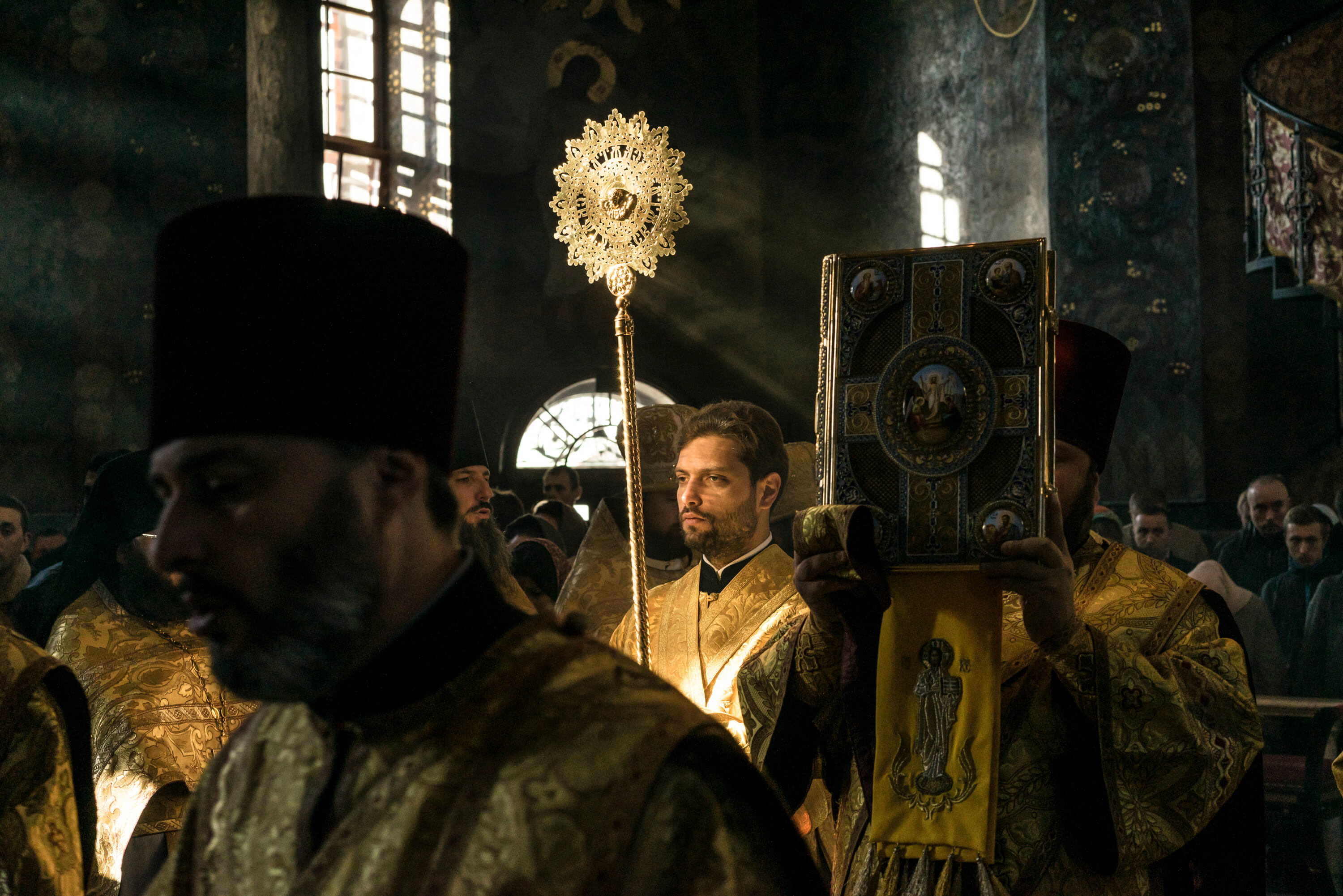
Sunday liturgy in the Tabernacle Church of Saints Anthony and Theodosius in the Pechersk Lavra in Kyiv. October 7, 2018.
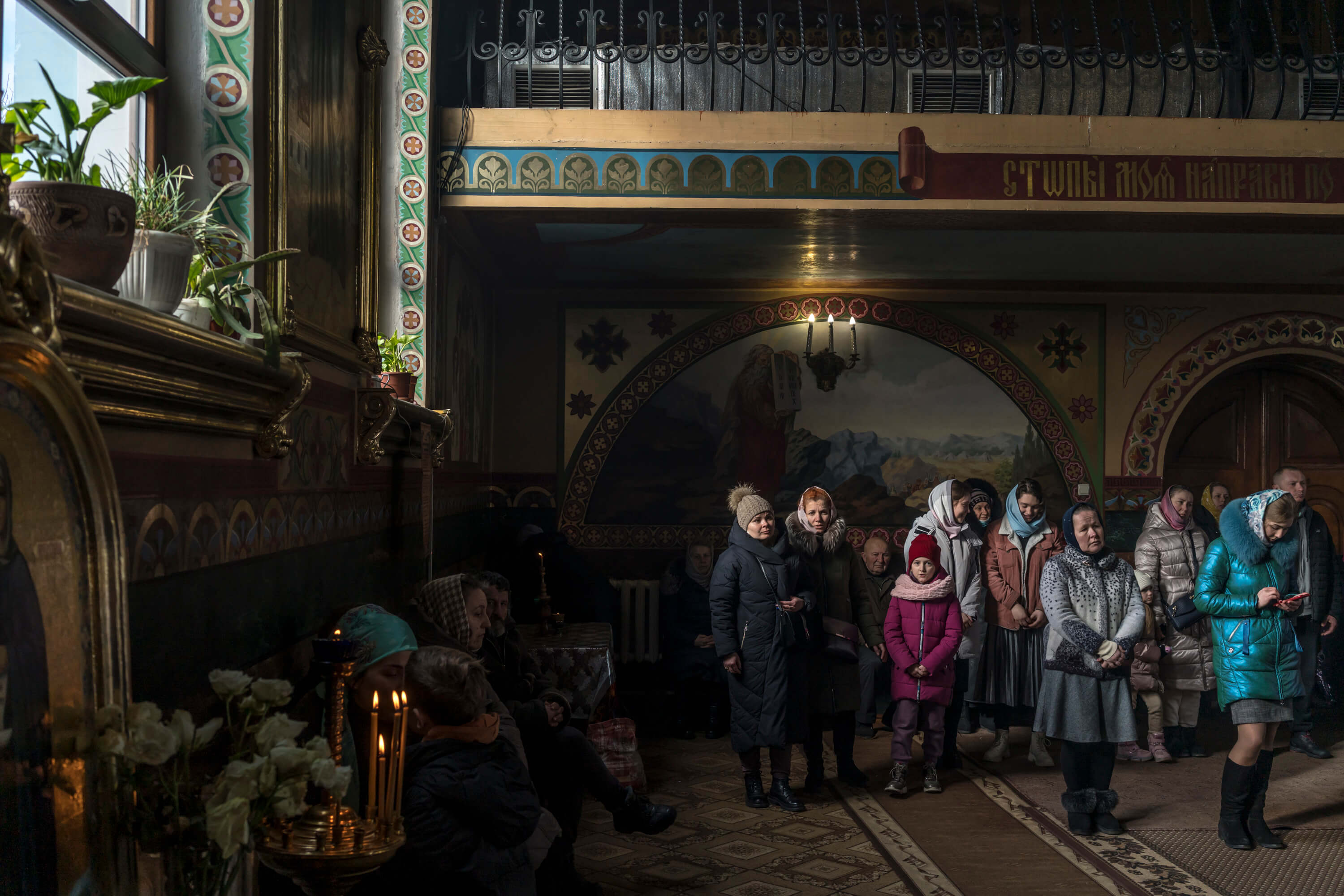
Parishioners attend the Sunday service at the Orthodox Cathedral of Saint Paraskeva in Kalynivka. February 27, 2022.

This is probably the first war in history that fully goes online, like a show. Most of the images are just taken with phones and spread in Telegram channels. Given these conditions, what do you think is the niche for professional photographers?
It’s a good question to think about. And it’s a hard one to answer because despite having hundreds of professional photographers around the country, they are all clumped up in the same places. So, mainstream media have huge gaps in coverage. On the other hand, it’s impossible for them to be in the right place at the right time, whereas literally any person with a smartphone can be there. And a grainy cell phone video is, obviously, more important than coming to that village three days later and reporting a missile attack.
We are competing in a race with zero chances to win; we will never beat Telegram. It collects and arranges these sort of crowdsourced videos. I would much rather stop competing with it and focused on doing slower, in-depth work far from the crowd. I think that our job is to take this wider view of the situation and not to worry about churning a few stories out every day.
We are competing in a race with zero chances to win; we will never beat Telegram.
What do you mean by “in-depth work”?
Let’s take for example the funerals which I documented. Sometimes, it wasn’t until I got there that I knew whose funeral it was. In the best case scenario, I had a chance to speak to some family members to find out the name of a mother, or a father, or someone who was grieving at the side of the grave. But that was the extent of reporting, because funerals are no good place for long conversations. But we could’ve done more to tell the story of a deceased person, why they joined the military, where were they, what happened to them.
Classic photography is partly based on the principle “If your pictures aren’t good enough, you aren’t close enough” by Robert Capa. But as you just said, nobody can be closer than a person with a smartphone. Do you still believe in classic photography?
I believe in its power, this personal experience. My pictures are not answers to questions, they are the process of searching for these answers. I go through this routine, the process of classic photography: I get in a car, go somewhere, meet people, observe the situation, spend time, take photos. By the afternoon, when you’ve spent time with a person, you do something you had no expectation of doing in the morning. You find something surprising, you find beauty in the moments. There is still a lot of power for me personally in this experience — just going out into the world and trying to find beauty.

Olesia Khadarina takes her horse, Sioma, for a walk near “Azovstal” plant in Mariupol. December 2018.

Ukrainian post. Pisky, Donetsk region. November 2014.

A girl looking out of the window of an evacuation bus, that takes women and children out of Avdiivka to Sviatohirsk, Donetsk region. February 2017.

Students of the school #68 learn what to do during shelling. In January, 31 people died under shelling and more than a hundred got injured. With that in mind, schools changed the training schedule from weekly to daily. Mariupol, February 2015.
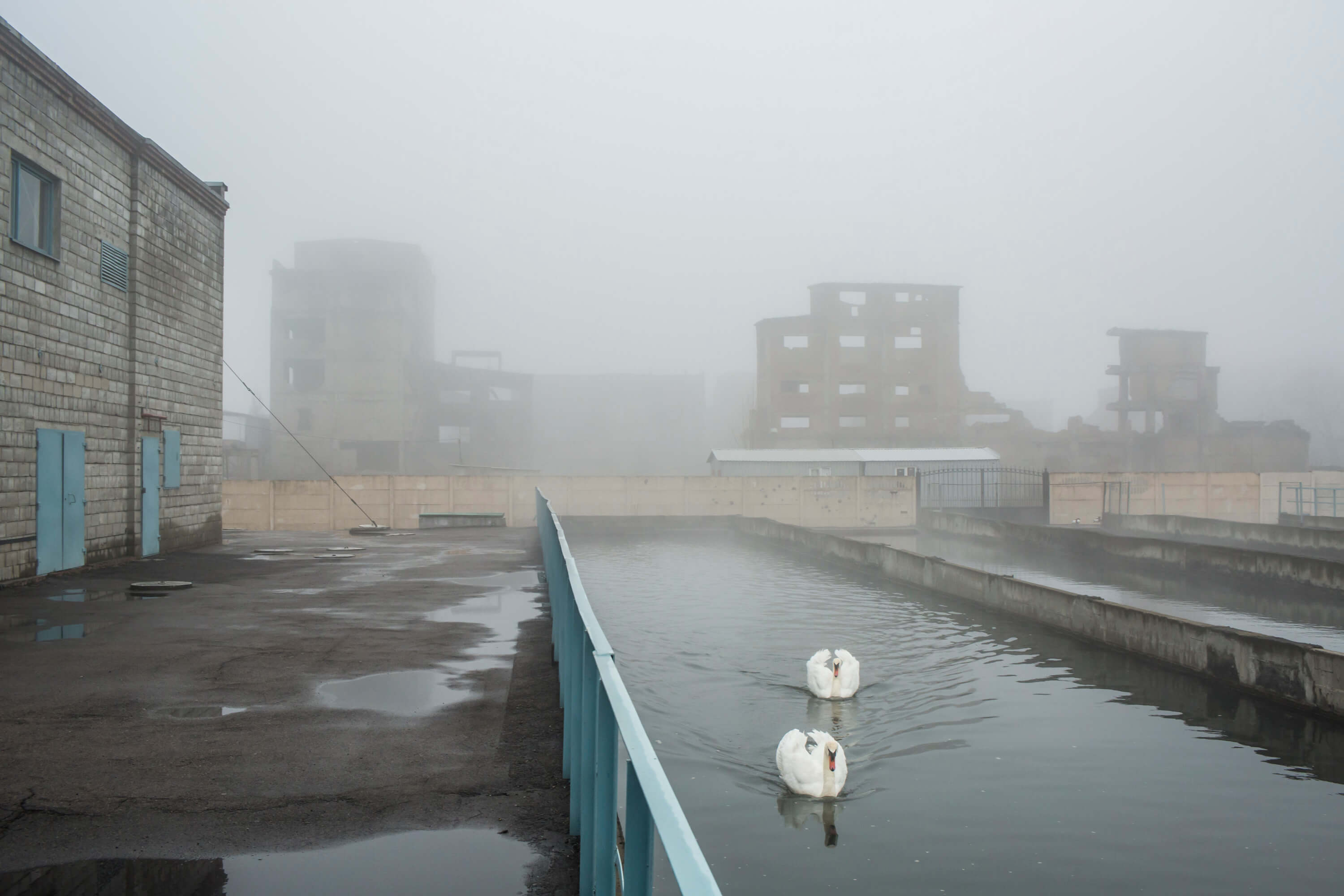
A couple of swans swims in the pool, filled with water that has been pumped out to avoid the flooding of “Scheglovska” mine. Makiivka, Donetsk region. March 2016.
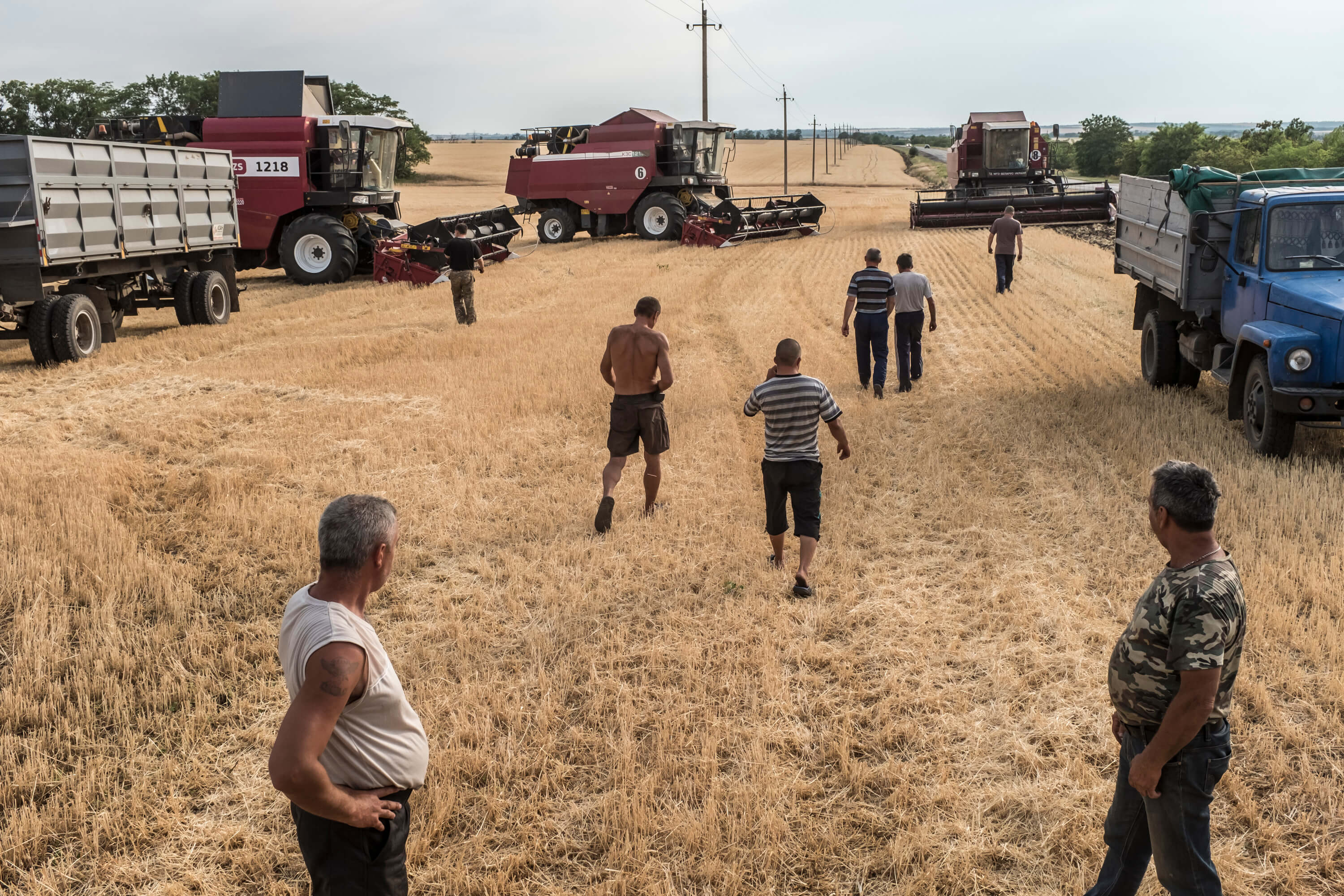
Farmers harvest wheat in Berdyansk, Zaporizhzhia region. June 30, 2018.
And what about the results? What do editros mean by “a good picture”? These rules aren’t written anywhere.
It depends on the purpose of the picture. If it is journalistic, it has to convey important information, arouse curiosity in the audience to want to know more. I think of photography as a language, similar to poetry, when you are trying to use the economy of this language. We, the photographers, are trying to use it in the most economic way this visual language that everyone understands, at least on an intuitive level. Everything beyond that is personal style.
Classic photography also teaches us to be neutral. What does being neutral mean to you today?
The deeper you are embedded in a culture, in environment, the stronger relationships and personal views you develop on the issue. On the other hand, an outsider, who has no understanding of a situation, doesn’t really have an advantage in reporting the event. There are huge drawbacks to both options, but I prefer to be closer to the situation. You just need to be aware of your perspective and of its potential influence on what you are doing.
A lot depends on the journalist, on the way they evaluate themselves and their attitude. It’s really hard for me to picture someone neutral, and if they truly are, then what mission do they have in this case? We don’t really need to contort ourselves to be neutral. You can spend a lot of time writing about what Ukraine said and what Russia claimed, showing both sides of the story. But the point is to go deep down and to tell what’s going on instead of reporting who said what.
You can spend a lot of time writing about what Ukraine said and what Russia claimed, showing both sides of the story. But the point is to go deep down and to tell what’s going on instead of reporting who said what.
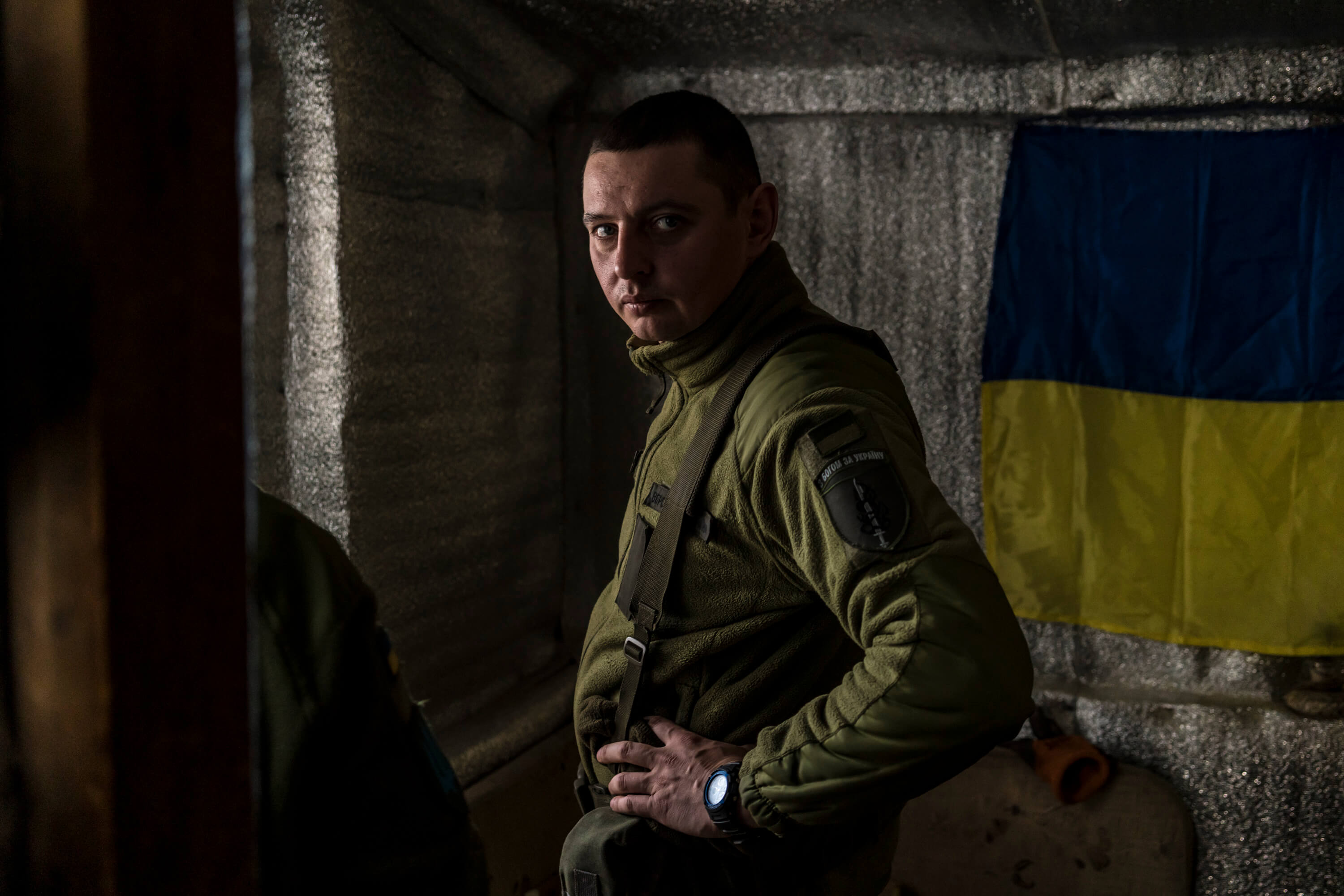
Ruslan, a Ukrainian soldier of the 53rd mechanized brigade, photographed in a house close to the front line. Chermalyk, Donetsk region. January 2022.
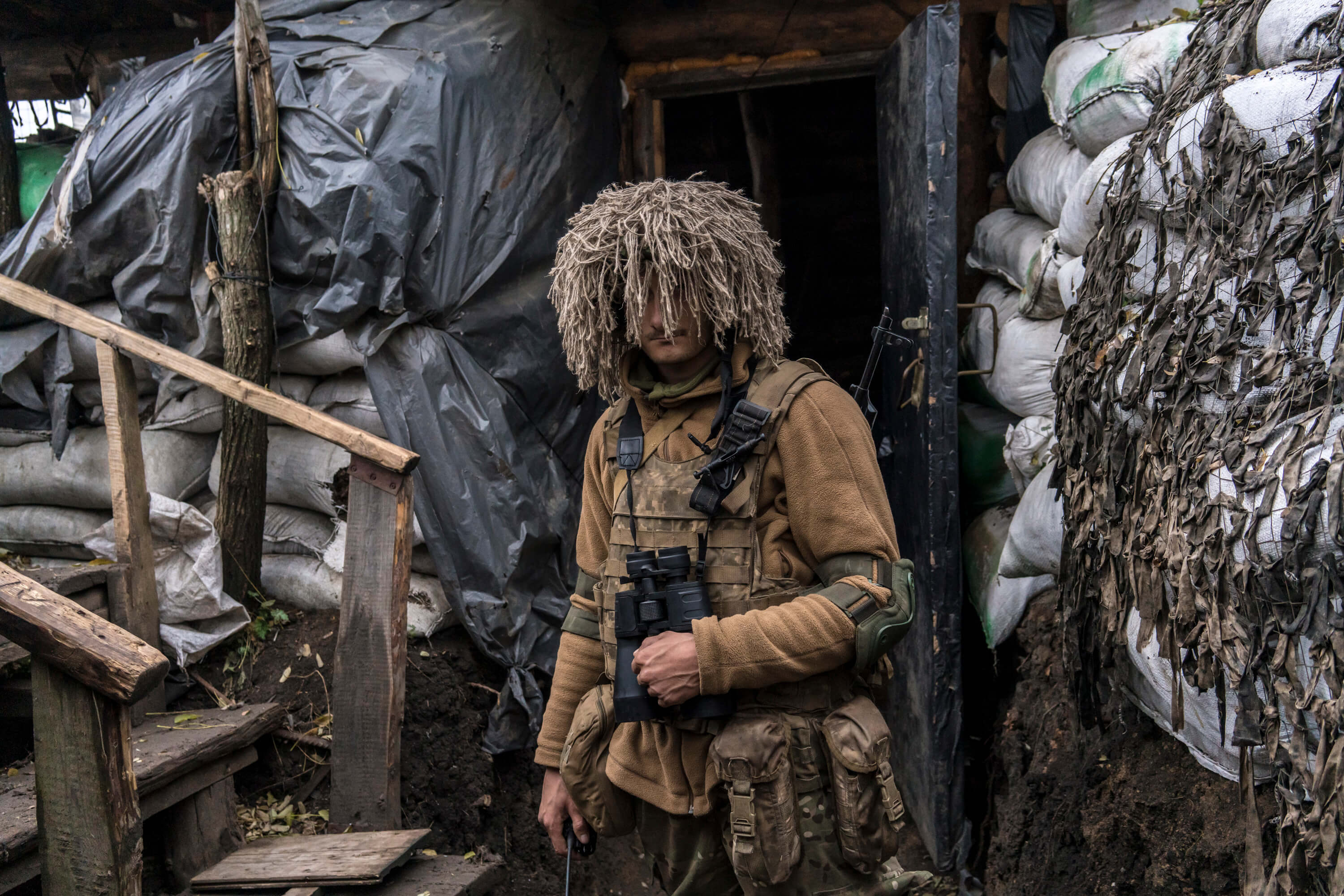
Dima, with a callsign “Warrior”, photographed on the frontline. Granitne, Donetsk region. November 2022.
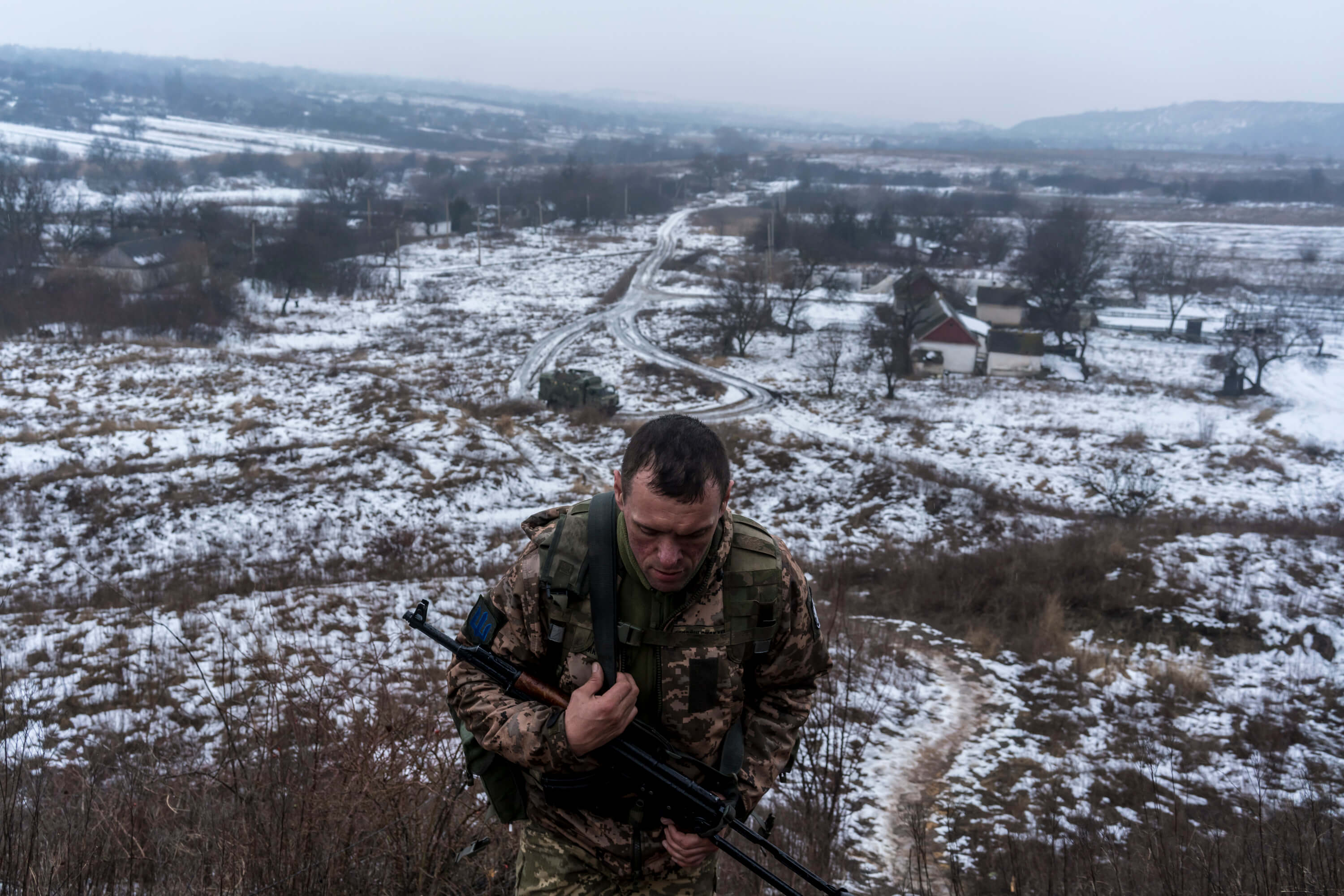
Eduard, a Ukrainian soldier of the 53rd mechanized brigade. Novotroitske. February 2022.
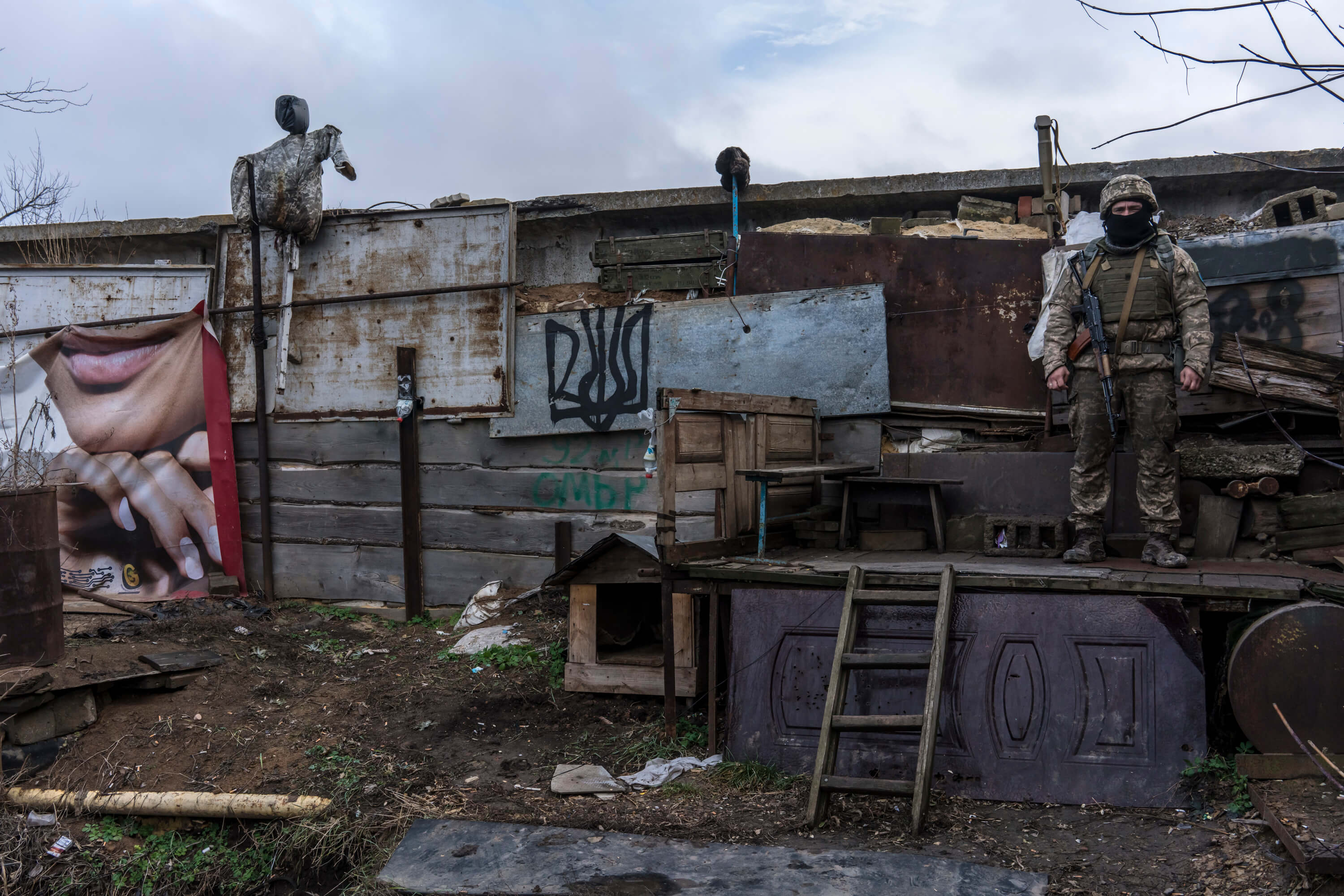
Ukrainian soldier at his position. Maryinka, Donetsk region. 2021 year.
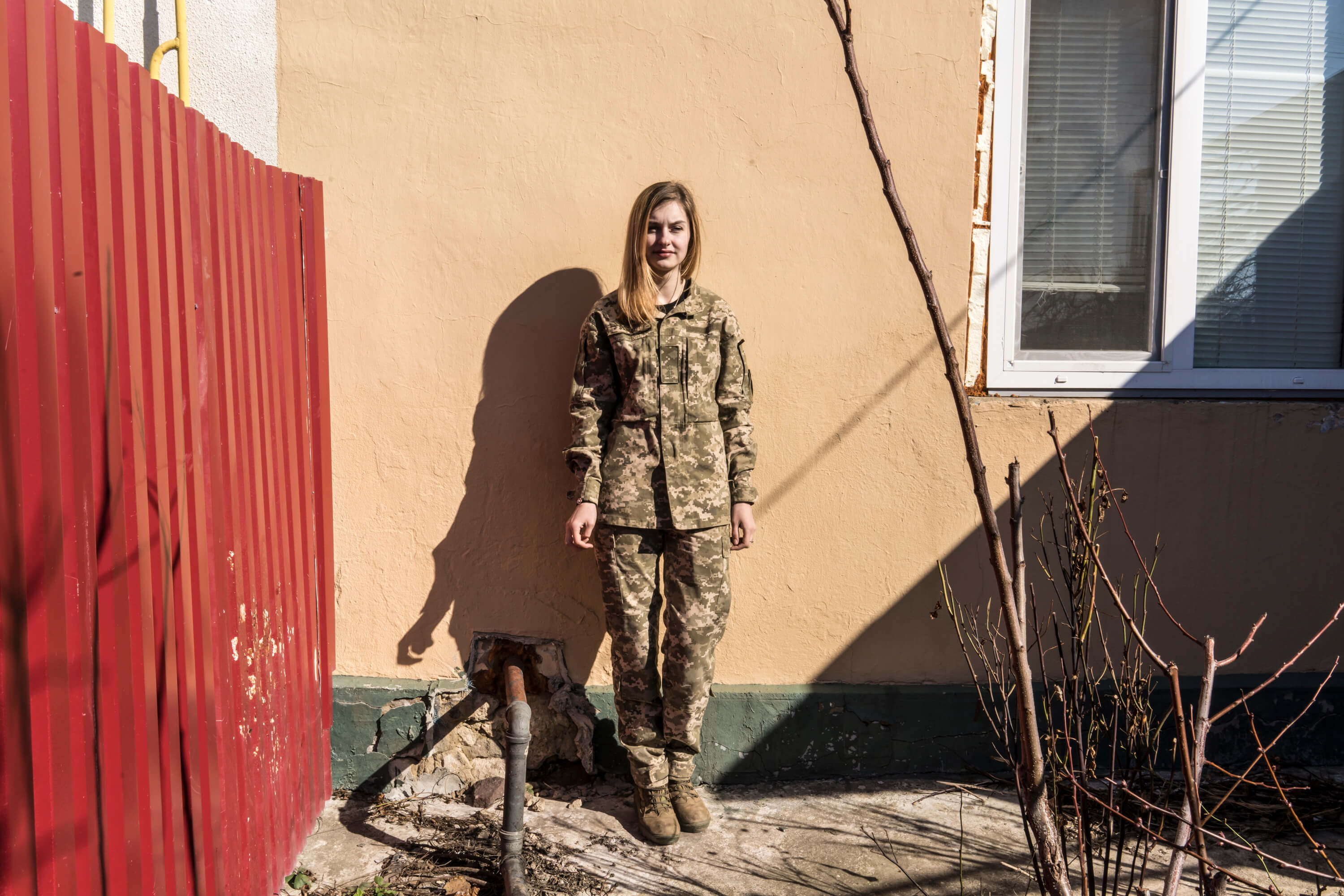
A Ukrainian servicewoman, Valeriya Sikal standing next to her house in Tomashpole. Sikal filed a complaint to military prosecutor and national police about sexual harrassment by her commander. 2019.

Deoccupied territory north of Kyiv. Firefighters wait for demining to start extinguishing a peat bog fire. 2022.
A lot of military photographers are not interested in reasons, they just go to the conflict zones. They come with a ready-made list for reporting — a funeral, a church, a marketpkace, a main square — appropriate what’s happening through local colors and sell this commodity to big media. Editors are happy, the photos become popular, and the images have a lot of views and shape the way the audience sees these events and places. How do we deal with that?
Firstly, we don’t compete head-to-head with photographers who are on that path. It often turns into a game — who’s going to come the closest to the crying widow and put their cameras three inches from her nose? But is that even the picture that we really need?
So what should we do?
I see no other option but to find a way to do something different that will turn out to be something more powerful. And hopefully, somewhere along the line, the realization will occur that emotional close-ups are not the best way to think about the situation. I can only lead by example.
Emotional close-ups are not the best way to think about the situation.
New and best
